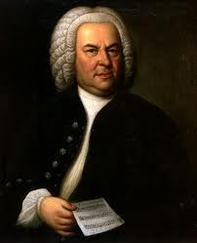A Brief History of the Clarinet

Johann Christoph Denner
In the Beginning, There was Christoph
The story of the clarinet began in the 1600's when the chalumeau, a small woodwind instrument, was in limited use in Europe. The chalumeau was the first true single-reeded instrument, but it had many flaws. The most significant of these was it's limited range of only one and a half octaves.
German instrument maker Johann Christoph Denner improved the underachieving chalumeau with his son, Jacob, around 1690. They added two keys, including the speaker key. They also improved the mouthpiece and the bell. These innovations brought the clarinet into the world.
The story of the clarinet began in the 1600's when the chalumeau, a small woodwind instrument, was in limited use in Europe. The chalumeau was the first true single-reeded instrument, but it had many flaws. The most significant of these was it's limited range of only one and a half octaves.
German instrument maker Johann Christoph Denner improved the underachieving chalumeau with his son, Jacob, around 1690. They added two keys, including the speaker key. They also improved the mouthpiece and the bell. These innovations brought the clarinet into the world.
Make Way for the Clarinet!

Mozart was one of the first composers to realize the clarinet's potential.
During the 1700's, the clarinet began to take it's recognized shape. The clarinet of the time only had five keys (see one here). This type of clarinet was the mainstay for much of the 18th and some of the 19th centuries, But more keys were always being added to play more notes. In the 1700's, pieces of music were starting to be written for the clarinet. Composers like Mozart were starting to realize the potentioal of the clarinet.
Adaptations and Innovations

Hyacinthe Klose
The 1800's were one of the most important times for the clarinet, for it was continually innovated and was changing. Hyacinthe Klose (in link, scroll to about the middle of the page) and Auguste Buffet put the Boehm flute key fingering system on the clarinet in the mid-1800's. Previous key systems on the clarinet required difficult cross fingurings. These include the Auler and Albert key systems.
The next innovation came from Iwan Muller who developed a thirteen keyed clarinet with foam pads on the keys. He also further improved the tone and created easier fingurings. His work is still seen in modern clarinets.
The most important thing for the clarinet in the 1800's though was the music that was being written. The clarinet was part of many different types of music and was a mainstay in orchestras and bands.
The next innovation came from Iwan Muller who developed a thirteen keyed clarinet with foam pads on the keys. He also further improved the tone and created easier fingurings. His work is still seen in modern clarinets.
The most important thing for the clarinet in the 1800's though was the music that was being written. The clarinet was part of many different types of music and was a mainstay in orchestras and bands.
The Swing Era and Beyond

Woody Herman
The clarinet was widely popular in many genres in the 20th century. This included the many swing bands that were around. The best players came from these swing bands, including Artie Shaw, Benny Goodman, and Woody Herman. The clarinet was by now capable of meeting the demands of its' players. Modern clarinets have 16-17 keys and are made of metal, plastic, ebonite, or grenadilla (African Blackwood).
